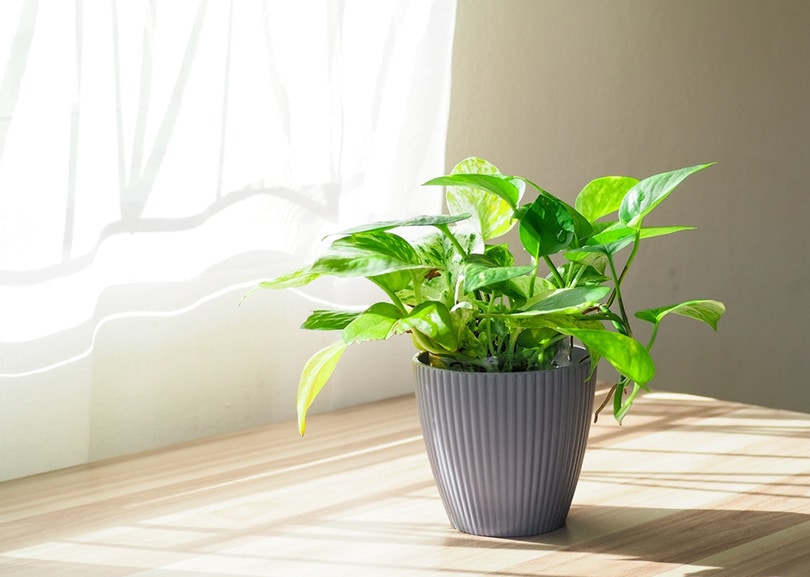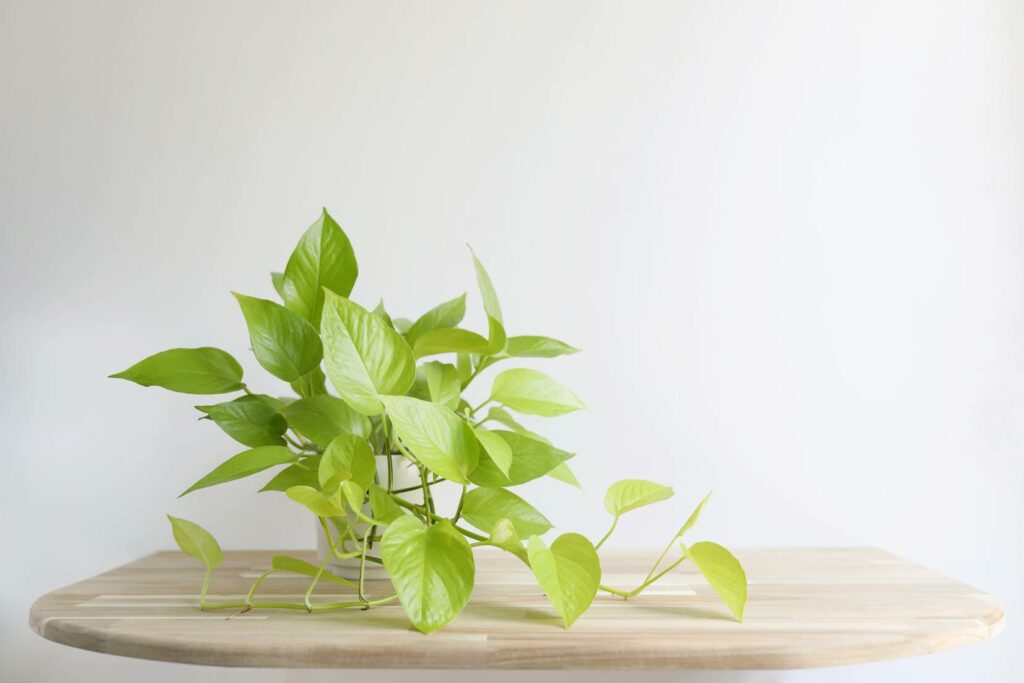How Fast Do Pothos Plants Grow? With 7 Ways for Faster Growth
-
Pete Ortiz
- Last updated:

Pothos is a favorite houseplant for indoor growers because it is fast-growing, requires minimal maintenance, and you can see visible results in a short time. If you have recently added this beautiful plant to your home collection, you might be wondering how fast they grow. In its growing season, the pothos plant can grow 12–18 inches every month in ideal conditions.
For rapid growth, they need a suitable balance between water, sunlight, and heat. Since it is a tropical plant, it will grow quickly during warmer months. These plants can even get to 20–40 feet long if growing naturally and left to their own devices.
This article will highlight the exact duration required by pothos to grow bushy and full. We will also discuss the tips and tricks to increase the growth rate of the plant. Read on to learn more.
How Fast Do They Grow?
For a more succinct answer, the pothos plant can grow as much as 1 foot per month in its optimal growing season. This usually runs from December to May. However, this will depend on the conditions being “optimal,” which is where growing this plant can prove to be tricky. As aforementioned, you need a delicate balance between heat and sunlight for the plant to thrive without having to expose it to extreme dryness and hot or cold environmental conditions.
Fortunately, pothos ivy is a very durable plant, capable of withstanding drought more than any other kind of ivy species. However, that doesn’t mean that the plant can flourish in dry conditions. It has specific requirements for achieving a healthy plant:
- Watering Regimens: Even though your plants need moist soil to thrive, if the roots are overwatered, they will begin to rot. Instead, wait for a couple of days until the plant droops, and then soak the plants with a generous dose of water.
- Light: Variegated plants such as the poison ivy usually lose their variations and color distinctions. Your once vibrant and healthy-looking green leaves could easily get pale from too much exposure to the sunlight. Therefore, you must limit exposure to direct sunlight.
- Fertilizing: You can also fertilize your pothos plant, but make sure that you don’t give the plant as much as other indoor plants. The potting soil that you plant the plant with doesn’t necessarily have to provide natural nutrients. So, fertilizers will be essential to stimulate their growth.
- Pruning: Since the pothos ivy plant can grow so fast, ensure that you prune frequently. The stems should be pruned on the shorter side but ensure the foliage remains full.

How to Grow Your Pothos Plant Faster – 7 Ways That Work
If you want to add an aesthetic appeal to your home with pothos ivy, you will want to ensure that your plant grows fast. Here is how to guarantee that happens:
1. Utilize a Nutritional Growing Medium
To successfully grow a thriving pothos plant, it’s pertinent you avail the necessary conditions from the start. You will probably purchase your plant in its young stage and in a small pot. Because of its extensive root system, you will have to re-pot as the plant grows bigger.
For rapid growth, you will have to choose well-draining soil for your potting mix to keep your plants healthy. Pothos ivy does well in soil with a PH level of 6.1 to 6.5. However, your plant will not be too harshly affected if the PH is outside this range.
2. Provide Bright, Indirect Sunlight

As earlier mentioned, the pothos ivy requires a careful balance of light conditions. As much as the plant needs exposure to bright light, if left to sit in the sun for too long, the leaves burn easily. So, the best way to ensure your plant receives optimum light conditions is by placing it in bright but indirect light.
If placed in a dark room, the leaves can lose their variegation, which inhibits the plant’s growth rate. If the leaves develop a pale color, this is an indication that they have been exposed to too much sunlight.
3. Ensure the Room Temperature Ranges Between 70°F–90°F
Since the pothos ivy plant is native to the Solomon Islands, it thrives in high humidity and temperature levels. Just make sure that your plant grows in this temperature range. Sure, the plant can handle temperatures of 55°F, but anything below that will stunt its growth and the leaves will turn black, too.
4. Only Water When the Soil Is Bone Dry

Too much water will cause your plants to turn from green to yellow in color and experience root rot. Therefore, planning a watering schedule will help you avoid overwatering. Only water the plant after it has drained and the saucer beneath the pot has been drained out.
Underwatering also has adverse effects on the pothos ivy plant. The plant leaves could easily curl and become limp and, in the worst-case scenario, drop off.
5. Fertilize Every 2–3 months
Granted, your pothos plant will grow just fine without fertilizing, especially if growing in a decent potting mix. Yet, giving your plant a well-balanced fertilizer every 2–3 months during the growing season optimizes the plant’s growth rate.
Choose soluble fertilizer that is easy to use. It might not significantly change your plant’s size but will provide the necessary nutrients for the plant to thrive.
To confirm if your pothos ivy plant needs fertilizer, simply test the soil. Many indoor plant stores sell testing kits that can reveal exactly what nutrients are available in the soil and which ones need to be added. The main nutrients needed include nitrogen, potassium, and phosphorus.
6. Keep Pests at Bay

Like any typical house plant, the pothos ivy is also susceptible to pests that can stunt its development or damage the sensitive leaves. However, you need not concern yourself with pest infestations on this plant species because they are rare. Insects rarely attack this plant, but sometimes bugs like thrips, caterpillars, mites, scales, and mealy bugs can choose to make a meal out of it.
If by any chance your plant is a victim of bug attacks, you should take immediate action. Simply remove the bugs individually by wiping down the plant with a weak alcohol and water solution. Alternatively, use an insecticide to stop insect infestation on your plants, though it is not recommended. However, you can also make an environmentally friendly bug repellant by mixing a liter of water with 1 tablespoon of regular dishwashing liquid.
7. Don’t Forget to Prune
Usually, the pothos ivy plants resume growth after slight pruning. If your plant looks leggy, simply pinch a couple of inches from inactive stems to promote new growth. Additionally, since this plant is a climbing species, just keep four or five branches and get rid of the rest regularly. This will make the plant divert the available nutrients to the remaining vines allowing them to grow faster and taller.
Conclusion
To make sure that your pothos ivy plant grows fast, simply make sure that the potting mix is sufficiently aerated for the proper movement of air and water. If you grow your pothos outdoors, consider transferring the plant to a shaded area to limit exposure to direct sunlight.
With the right care, your pothos plant will soon thrive and you’ll be amazed at how much this beautiful plant will transform your space.
Related Reads:
- How to Propagate Pothos in Water (10 Expert Tips)
- How To Make Potting Soil for Pothos Plants (Step by Step Guide)
Featured Image Credit: Khaohom Mali, Shutterstock
Contents


